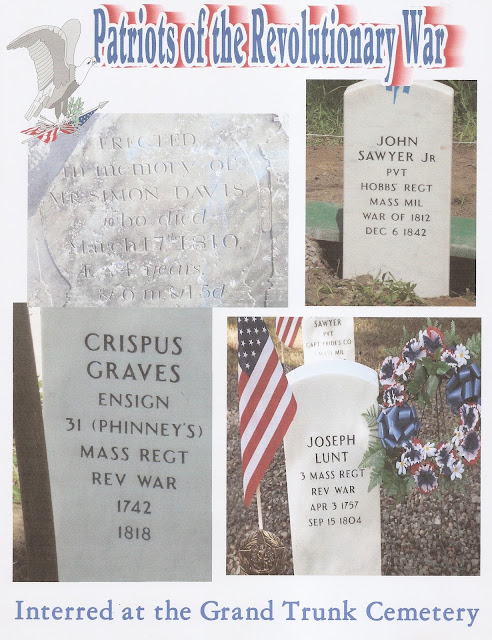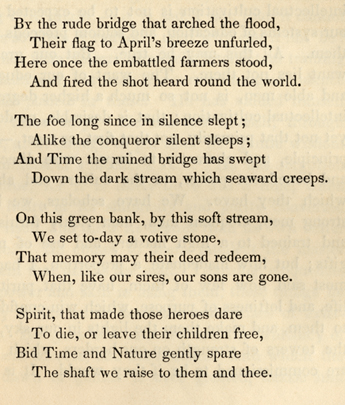 |
| The Graves School |
Musings
"The evil that men do, lives after them,
the good is oft interred with their bones."
While I'm sure readers recognize this quote from Anthony's speech at the funeral of Julius Cesar, it has been popping up in my thoughts as I have thought about writing this post.
What of the 150 or so men, women and children buried at the East Deering/Grand Trunk Cemetery whose names and records have been lost over time. What of their lives, their contribution to the story of the city of Portland? Has their 'goodness' been buried with their bones?
Many cemeteries read like stone journals; pages in the history of a people, place and time. I am so grateful to the people and organizations like Maine Old Cemetery Association, Maine Genealogical Society, our Maine Historical Society, and the individual towns and cities with their Historical Societies; friends groups like Spirits Alive and Friends of Evergreen Cemetery for their commitment and work to preserve history for our future.
Since beginning this blog dedicated to the reclamation of the old East Deering Cemetery, and to keeping alive whatever stories there are left of those folks who settled here, I am always surprised and excited when new pieces of the tapestry reveal themselves. Such is the case in point.
On August 31, 2013, I published a post entitled: Crispus Graves, Hermit of East Deering Village, about the eccentric, but kindly man who, resided in East Deering with his brother Ebenezer Graves until his death on March 15, 1879. Recently, I have found some wonderful additions to his story that I hope readers of this blog will find as intriguing as I have.
Crispus Graves was born in 1816, the famous year without a summer. "Eighteen Hundred and Froze To Death" was an expression used in a number of accounts of the cold summers from 1811 - 1817, but the summer of 1816, is recorded in the annals of New England as "The Year There Was No Summer." Spring was late and very dry. The growing season in Maine, from late spring to early fall was effected by damaging and prolonged cold waves that devastated crops on the vine and in the fields. Wide-spread snow falls were experienced from Northern and central New England to New York and even, in one account I read, to Chambersburg, PA. where my daughter, Rachel lives.
The Portland Eastern Argus reported a snowfall in Portland on July 4, 1816, as between 9 and 12 inches. The corn crop, a staple for the diets of humans and animals was destroyed. In many areas of Maine, people headed out west, having lost their animals and crops. It was a difficult time, despite the hardiness of the Maine farmers.
 |
| I found this Image depicting the poverty and migration during the Summer of 1816 |
If readers are interested in knowing more about the Summer of 1816, check out the following:
Crispus Graves was a farmer, and cared for his elderly father Andrew until his death. In his later years, he gained the reputation as a hermit, living with his brother Eben, five years his senior, until his own death at the age of sixty-three. What is amazing is how his gift to the town of Falmouth came about and how it has lived on to this very day.
 |
Please note the highlighted area. Crispus Graves' property next to Crispus Sawyer,
also a resident of the GTC. |
Crispus Graves died on March 15, 1879 and according to his will, left the remainder of his estate to the town of Falmouth, District 5 school. I recently discovered and read the wonderful little book by former school teacher Charlotte Bridgham Wallace and illustrated by her husband Donald Wallace called: E Pluribus Unum: A Story of Falmouth, Maine, published in 1976 for the bicentennial of our nation's independence.
 |
| Charlotte Wallace |
Charlottte Wallaces's book contains the history of Falmouth from its origin as a settlement in the larger district, through its separation and establishment as the town we know as Falmouth today. She incorporates information about each of the neighborhoods. Here is where I discovered in the section on Presumpscot Falls this wonderful story about our Crispus Graves.
According to legend, the children of the District 5 school were very taken by the kindly gentleman who took such and interest in them, but the children in his own neighborhood of East Deering would throw stones at his horse as he passed by. Could this be why he willed his estate to the town of Falmouth?
According to his will, Crispus Graves provided for the care of his brother, Ebenezer until his death in September 1884. It reads as follows:
I give and bequeath to school district #5, in the town of Falmouth, all the residue of my estate, both real and personal, whatever the same may be found for the purpose of educating children of said district.
Mrs. Wallace included images of the old school houses in her book, among them is the Graves School, so named for the benefactor, Crispus Graves.

The first school in the Pleaasnt Hill area was a red brick building called the Presumpscot School. It was torn down and replaced by a new wooden school built about 1885 from a legacy of Crispus Graves. Legend has it that Graves would drive by in his carriage and stop to talk to the children. Because he was so impressed by thei politeness, he willed money to the District to be used for their benefit. The new school was called the Graves School. At one time, the building housed four primary rooms on the first floor and four grammar school rooms on the second flour. Trustees were elected to take care of the 'Crispus Graves Fund'. The trustees sold the school to the town in 1897 for $1200. A bell was installed by the town after the students solicited funds around the area. The bell was ordered by the teacher, Miss Anna Colley about 1910 - 12. In 1947, the school was discontinued, and another small, two room schoolhouse was built across the street. This school closed in 1975. A small park: the Graves Park is on the site today.
 |
Today the Graves' School is now a private residence.
The school bell tolled at the bicentennial celebration in 1976.
The State Legislature's action instituting the Crispus Graves Fund for the benefit of educating children.
Apparently, a small portion of the fund established by the Trustees was designated for graduates living in the Presumpscot Falls area. Each graduate received $10.00 as a nominal gift in memory of Crispus Graves. I wondered if the fund still existed and called the Superintendent's office to find out. They were unaware that such a fund still existed and assumed it had been depleted long ago. Yesterday, however, I visited the Falmouth Historical Society office in their new site on 60 Woods Road, and was delighted to find that last year, nearly 136 years after his death, the Crispus Graves Fund was given to the Falmouth Historical Society and there still remained the amount of $1000. Kudos to the trustees and the town of Falmouth for taking such good care.
The good that some men do during their lifetime does live after them as it has in the case of Crispus Graves.
I hope readers enjoy these wonderful photographs that I found at the Falmouth Historical Society of some of the children who attended the Grave School. I'm sure, Mr. Graves would be pleased.
Finally, someone sent me this piece and I want to share it for all you searchers and seekers out there.
|





























































